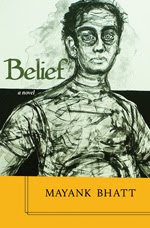Recently, during a classroom discussion at Sheridan College on VS Naipaul’s A Bend in the River, I made a few observations about Naipaul that I wish to share here.
In Imagining Homelands by Bharati Mukherjee makes an observation about Naipaul that reflect my sentiments about the great writer.
Mukherjee writes, and I quote, “‘Damn him,’ I want to shout, damn his superior airs, damn his cold detachment, damn his vast talent, damn his crystalline sentences. I want him to manifest love, for just a paragraph or two, to cut loose.”
But she doesn’t end there. She adds, “This does not affect my respect for his work.”
A Bend in the River was first published in 1979.
A couple of years later – in 1981 – Salman Rushdie published his third novel – Midnight’s Children.
Rushdie unleashed a revolution.
His writing was different from the conventional style and structure of both the language and the genre.
Rushdie wrote for an international audience without bothering about language, grammar or even sensibilities.
Hundreds of others followed, and continue to follow. In a certain sense, I believe that we’re all Rushdie’s children.
The reason why I introduced this element of contrast was to highlight the different styles of writers who published their works just a year apart.
To me, Rushdie is far more accessible as a writer.
To read Rushdie is to see a popular Hindi film – he takes over all your senses and releases you at the end totally subsumed in his creation.
You can’t escape it even if you don’t like it.
Naipaul despite all his skills poses an intangible challenge.
To read Naipaul is to see a Fellini film. Even if you don’t relate to it you are spellbound by the craft.




No comments:
Post a Comment